
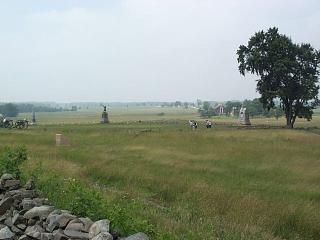
Pettigrew's Carolinians were not idle. As they advanced to the left of Pickett they too recieved flanking fire, only this was from piece meal units that could be found and thrown together into this flanking position. The marker to the left in the above picture is the location of how far the men of North Carolina got in to the Federal position. This marker's location is actually higher up the slope of the ridge than the marker to Pickett's Virginians.
Where was Pickett during this time? Some historians blame his lack of leadership on this day for the failure of this attack. Several accounts have him sheltered from the Federal forces in the area of the Codori farm. The barn of which is right of center in the above picture. It seems to me a divisional commander shouldn't be too near the front. Other accounts put him in the creek bed, that is described as an outcropping of rocks, 100 yards from the stonewall of the Federal line. As seen as the darker green area to the right of center in the picture below.
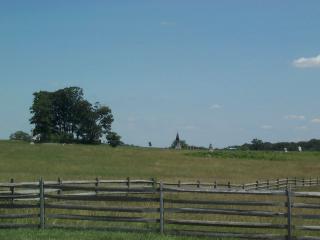
There are many accounts of his sending couriers all over the field that day, so Pickett must have been actively participating in the event.

Seeing Garnett's men faltering in front of him Brigadier General Armistead ordered the double-quick, but no one heard him over the din of the battle. So he took off his black hat, placed it on the point of his sword and from the front led his brigade onto the Federal position. Armistead was the first over the wall, 150 of his men rushed in behind him. Here face to face with the enemy he could see who he was fighting. "It's the Philadelphia Brigade. Give them cold steel, boys!" It was his last order.

As Armistead placed one hand on a cannon, his other still held his sword and hat high, an unknown Federal Colonel seeing Armistead's pearl rushed at him with his horse hoping to knock him down to save him from the rain of lead. But he was too late. He dismounted and attended the fallen General.
"Is General Hancock... Would like to see General Hancock." gasped Armistead.
"I'm sorry, sir. General Hancock had been hit."
"No." said Armistead as he closed his eyes. Then he took a package from a pocket, "Will you see to it that Mrs. Hancock receives this?"
"Yes sir."
"Will you tell General Hancock... Will you tell General Hancock, please, that General Armistead sends his regrets. Will you tell him... How very sorry I am."
After the war Mrs. Hancock anonymously received a package containing General Armistead's Bible.
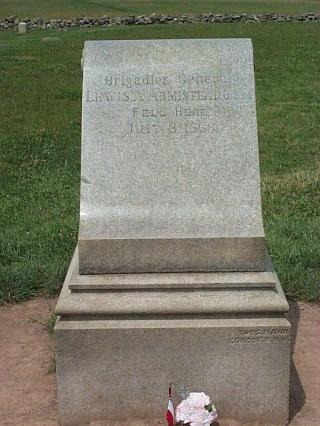
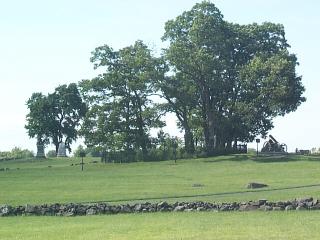
To the right of the trees in this picture is the "High Water Mark" Monument. This is was as far into the Federal lines as the Confederate army would get. Many historians believe that this attack on this day was the beginning of the end for the Southern Cause. This is because the Army of Northern Virginia never again went on the offensive.
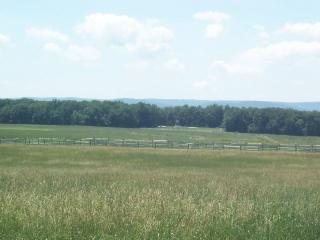
I did not step across the line of rocks that the Yankee's used as a defensive position. This is reverent ground. As I learned later, the stonewall had been rebuilt by the Park Service, apparently the rocks of the wall make great souvenirs of the battlefield. It hadn't even ocurred to me, until that point to take one, I didn't. I had hoped to have an experience like that of a Rebel soldier on the day of that battle, short of being shot. I did rest for a few moments under the shade of the tree at the apex of the "angle" and looked back where I had come from, back toward the Virginia monument.
It would be a long walk back for a wounded man, or for a man with a wounded comrade under his arm. Even though the attack had been repulsed the Union soldiers and gunners continued firing on the retreating Confederates. It would have been hard enough to walk into that fire, and harder still to walk away from it, while they shot at your back.
| 
